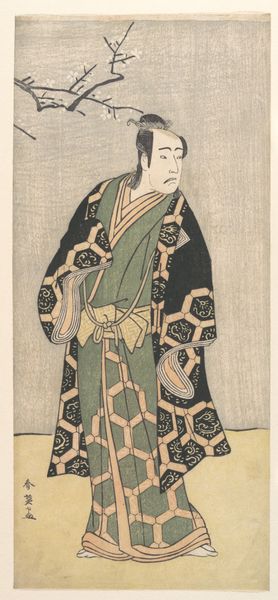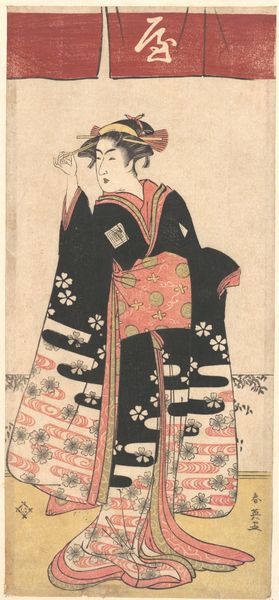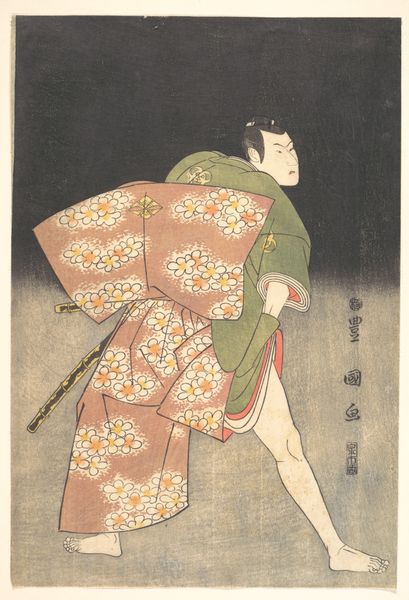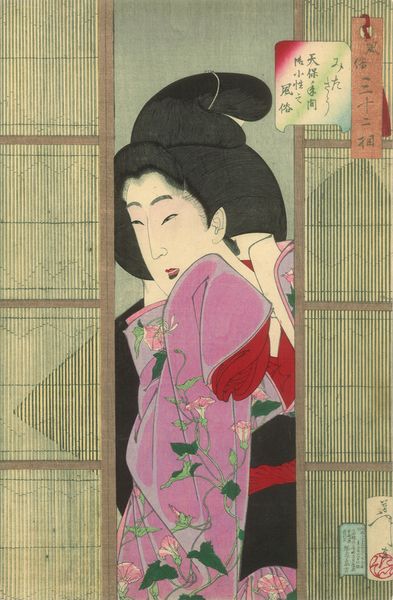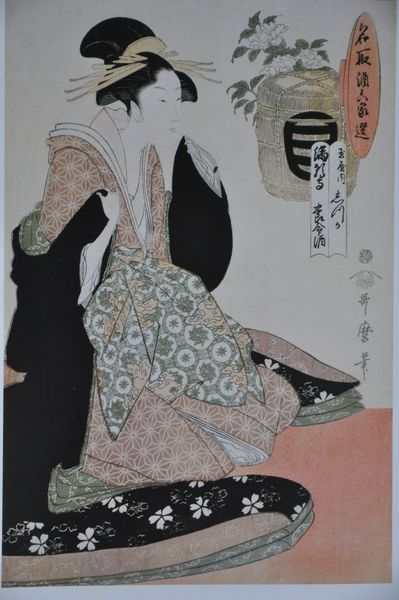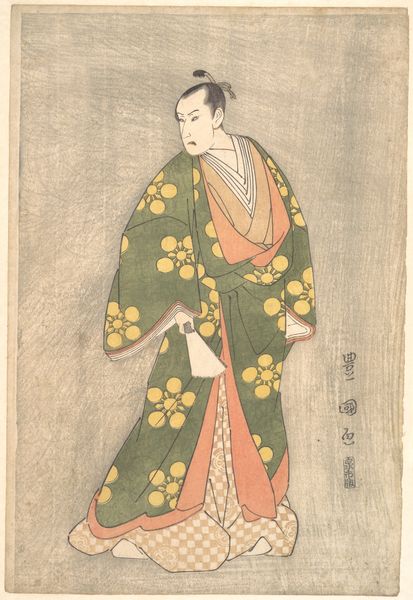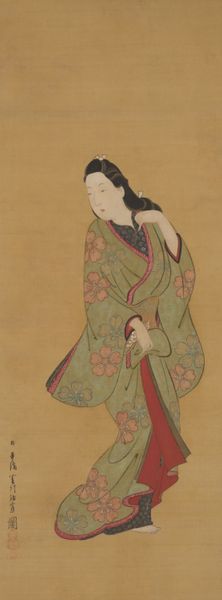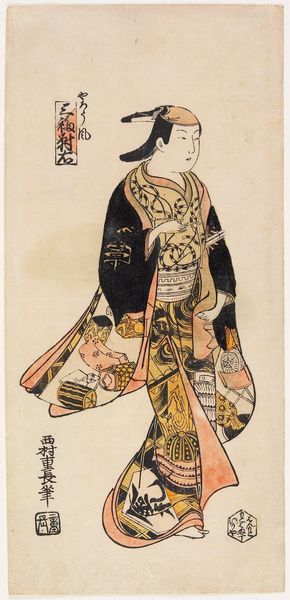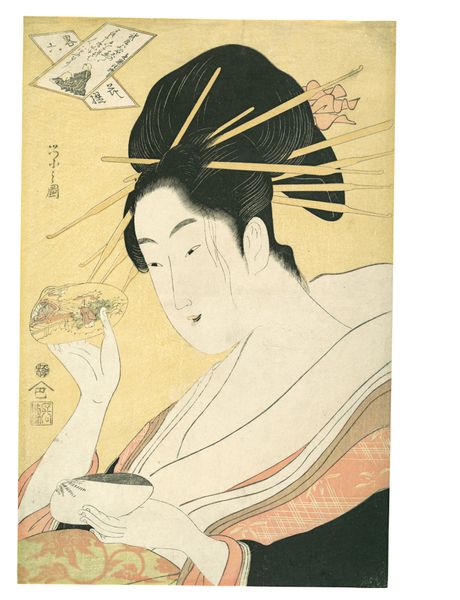
Dimensions: block: 44.29 × 31.75 cm (17 7/16 × 12 1/2 in.) sheet: 47.63 × 34.29 cm (18 3/4 × 13 1/2 in.)
Copyright: National Gallery of Art: CC0 1.0
Editor: So, here we have Elizabeth Keith's 1936 print, "Shigiyama in San-Ba-So". It's this striking figure in a vibrant green robe. The colors feel so intentionally flat. What can you tell me about this piece? Curator: Look closely at the printmaking technique, how the color saturation varies across the robe. These details indicate specific labor practices. Do you think Keith's choice of this traditionally Japanese subject matter intersects with global art markets and material exchange of the 1930s? Editor: That's an interesting point. I was just focusing on the aesthetic and hadn't considered the economics. Do you think the ukiyo-e influence speaks to the mass production and consumption of art? Curator: Precisely! Think about the cultural value attributed to 'original' versus 'reproduced' images at that time, and how that shapes our understanding today. Also, who were Keith’s intended consumers for prints like this and how does that impact its meaning? The print medium enabled a broader circulation beyond an elite art-viewing public. Editor: I didn't really consider that the art itself would become merchandise to sell back home to a Western audience. Thanks, that shifted my perspective! Curator: It reveals the intricate link between artistic expression, global markets and societal class in defining taste. Always consider how art functions as an economic object beyond its aesthetic value.
Comments
No comments
Be the first to comment and join the conversation on the ultimate creative platform.
